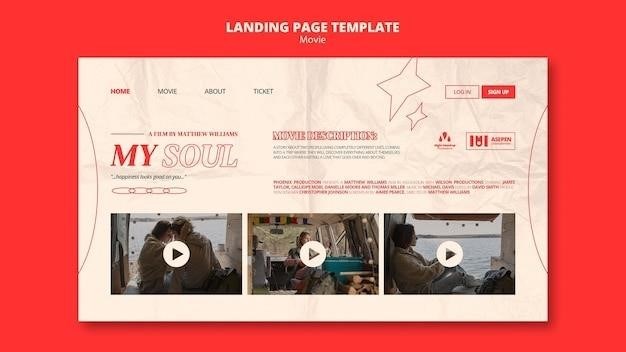Boss TU-3 Chromatic Tuner Manual⁚ A Comprehensive Guide
This comprehensive guide provides a detailed look at the Boss TU-3 Chromatic Tuner, a popular and reliable tool for guitarists and bassists․ It covers everything from its key features and tuning modes to using the device effectively and troubleshooting common issues․ We’ll also delve into the TU-3’s unique features like the High Brightness Mode, Accu-Pitch Sign Function, and Guitar/Bass mode․ This manual will equip you with the knowledge to get the most out of your Boss TU-3 and ensure accurate tuning for any musical situation․
Introduction
The Boss TU-3 Chromatic Tuner is a staple in the world of guitar and bass tuning, renowned for its accuracy, durability, and user-friendly interface․ It’s the successor to the highly successful Boss TU-2, building upon its legacy with enhanced features and a refined design․ This manual serves as your guide to understanding and mastering the TU-3, empowering you to achieve precise tuning for your instruments․ Whether you’re a seasoned musician or just starting out, the TU-3’s intuitive operation makes it a valuable tool for any player․
This manual will delve into the TU-3’s core features, explaining its various tuning modes and how to utilize them effectively․ You’ll learn about the Accu-Pitch Sign function, which provides visual confirmation of accurate tuning, and the High Brightness Mode, designed to enhance visibility in challenging lighting conditions․ We’ll also cover the Guitar/Bass mode, allowing you to tune by string number for added convenience․ By the end of this guide, you’ll have a comprehensive understanding of the TU-3’s capabilities and be equipped to use it with confidence․
Key Features of the Boss TU-3
The Boss TU-3 is packed with features designed to make tuning a seamless and reliable experience․ One of its standout features is the smooth 21-segment LED meter, offering precise visual feedback on your tuning․ This meter is highly responsive, making it easy to identify even the smallest pitch discrepancies․ The TU-3 also boasts a High Brightness Mode, which significantly enhances meter visibility in bright outdoor settings, ensuring you can see your tuning clearly even under harsh lighting․
Another key feature is the Accu-Pitch Sign function, which adds a visual element to the tuning process․ When activated, the meter’s lights stream toward the center from left and right, creating a dynamic display that signals accurate tuning; The TU-3’s robust construction and durable design make it ideal for stage use, ensuring that it can withstand the rigors of live performance․ Its compact size and lightweight design also make it easy to transport and integrate into any pedalboard setup․
Tuning Modes
The Boss TU-3 offers two distinct tuning modes to cater to different musical needs⁚ Chromatic and Guitar/Bass․ Chromatic mode is the standard tuning mode, allowing you to tune any instrument by identifying the note being played․ This mode is highly versatile and suitable for a wide range of instruments beyond guitars and basses․ The TU-3’s chromatic mode can accurately identify notes across a broad frequency range, making it perfect for tuning instruments like violins, cellos, or even wind instruments․
For guitarists and bassists, the Guitar/Bass mode provides a more streamlined tuning experience․ This mode displays the string number corresponding to the note being played, simplifying the tuning process for these instruments․ This mode is particularly beneficial for beginners or players who are more comfortable referencing string numbers rather than note names․ The TU-3’s intuitive design and user-friendly interface make switching between these modes effortless, ensuring you can easily adapt to the specific tuning requirements of your instrument and musical situation․
Using the Boss TU-3
The Boss TU-3 is designed for ease of use, making it a reliable tuning companion for musicians of all levels․ To begin, connect your guitar or bass to the INPUT jack․ This action powers the tuner automatically․ Next, press the pedal switch to turn the tuner on, and the CHECK indicator will illuminate․ Play a single note on your instrument and observe the display․ The note name or string number closest to the tone being played will appear on the meter, providing a clear visual indication of your instrument’s pitch․ Use the tuning knobs on your instrument to adjust the pitch until the meter shows a perfect match, indicating that the note is in tune․
The TU-3’s intuitive design and clear visual feedback make the tuning process straightforward and efficient․ You can seamlessly switch between Chromatic and Guitar/Bass modes using the MODE button, tailoring the tuning experience to your instrument and preference․ Additionally, the TU-3’s High Brightness mode enhances visibility in bright outdoor environments, ensuring clear readings even under challenging lighting conditions․ Whether you’re on stage, in the studio, or practicing at home, the Boss TU-3 provides a reliable and user-friendly solution for accurate tuning, allowing you to focus on your music with confidence․
Troubleshooting Common Issues
While the Boss TU-3 is renowned for its reliability, you may occasionally encounter minor issues․ Here’s a guide to address some common problems⁚
No Display⁚ If the TU-3’s display remains blank, ensure the power source is connected correctly․ Check the battery if you’re using one․ Also, verify that the INPUT jack is connected securely․ If the problem persists, try a different power source or battery․
Inaccurate Readings⁚ If the TU-3 displays an inaccurate pitch, ensure your instrument is free of any loose strings or hardware that could affect the sound․ Additionally, check the tuning mode setting․ Ensure that the correct mode is selected (Chromatic or Guitar/Bass) for your instrument․
Flickering Display⁚ If the display flickers or appears unstable, try replacing the battery if you’re using one, as a weak battery can cause this issue․ Check for any external interference, such as other electronic devices, that might be affecting the tuner’s performance․ If the flickering persists, consider consulting the Boss support website or contacting their customer service for further assistance․
High Brightness Mode
The Boss TU-3 features a High Brightness mode that enhances the visibility of the LED meter, making it easier to read in bright environments, such as outdoor stages or brightly lit studios․ This mode is especially useful for guitarists and bassists who perform under challenging lighting conditions․
To activate High Brightness Mode, simply press the MODE button․ The meter will cycle through the available modes⁚ Chromatic, Guitar/Bass, and High Brightness․ When High Brightness Mode is activated, the LED meter will illuminate with increased intensity, making it easier to see the tuning information, even in direct sunlight․
The High Brightness Mode is particularly beneficial for musicians who frequently perform outdoors or in venues with strong ambient lighting․ By boosting the brightness of the display, the TU-3 ensures that you can easily see the tuning information, regardless of the lighting conditions․ This feature contributes to the TU-3’s overall versatility and practicality, making it a reliable tuning tool for musicians in various performance scenarios․
Accu-Pitch Sign Function
The Accu-Pitch Sign Function is a unique feature of the Boss TU-3 that provides a visual indication of accurate tuning․ It uses the movement of the LED meter lights to show when a note is in tune, making tuning more intuitive and efficient․
When the Accu-Pitch Sign function is enabled, the LED meter lights will stream towards the center from both the left and right sides when you play a note in tune․ This creates a visual cue that helps you quickly identify when your instrument is perfectly tuned․ The smooth and dynamic movement of the lights provides a more engaging and responsive tuning experience compared to static displays․
To enable or disable the Accu-Pitch Sign Function, simply press the MODE button twice․ The indicator will change from “OFF” to “ON” or vice versa․ This function allows you to choose your preferred tuning method, depending on your personal preference and the specific requirements of your performance setting․ Whether you rely on the visual cues of the Accu-Pitch Sign Function or prefer a more traditional approach, the TU-3 provides the flexibility you need for accurate and efficient tuning․
Guitar/Bass Mode
The Boss TU-3 offers a dedicated Guitar/Bass mode, designed to simplify tuning for guitarists and bassists․ This mode displays the string number instead of the note name, making it easier to tune individual strings quickly and efficiently․ This is especially beneficial for beginners or players who are more comfortable with tuning by string number rather than identifying notes․
To switch to Guitar/Bass mode, simply press the MODE button once; The display will switch from showing note names to displaying string numbers․ This mode is perfect for players who are familiar with the standard tuning of their instrument and prefer a more straightforward tuning experience․ It eliminates the need to decipher note names and focuses on the precise tuning of each string․
The TU-3’s Guitar/Bass mode also supports 7-string guitars and 6-string basses, ensuring that players with these instruments can utilize this convenient feature․ Whether you’re a seasoned professional or just starting your musical journey, the Guitar/Bass mode provides a user-friendly and effective way to ensure your instrument is tuned to perfection․

TU-3W Features
The Boss TU-3W is a variation of the standard TU-3 that offers enhanced functionality for discerning musicians․ It boasts a unique feature that allows users to switch between true bypass and buffered bypass modes, providing flexibility for different signal paths and tonal preferences․ True bypass maintains a direct signal flow when the tuner is off, preserving the instrument’s natural tone, while buffered bypass offers a clean and consistent signal even when the tuner is inactive․
The TU-3W also incorporates the High Brightness mode, designed to ensure optimal visibility in bright outdoor environments․ This feature significantly enhances the LED meter’s brightness, making it easier to read the tuning information even under harsh sunlight conditions․ The Accu-Pitch Sign function remains a key feature in the TU-3W, using the motion of the meter’s lights to indicate when tuning is completed․ The meter’s lights stream to the center from the left and right when the Accu-Pitch Sign is active, providing a visual cue for precise tuning․
Guitar/Bass mode is also present in the TU-3W, allowing users to tune their instruments by string number for a more intuitive and streamlined tuning experience․ The TU-3W caters to the needs of guitarists and bassists who demand both accuracy and flexibility in their tuning setup, offering a versatile and reliable tuning solution for various musical scenarios․
The Boss TU-3 Chromatic Tuner stands as a testament to Boss’s commitment to providing reliable and user-friendly tools for musicians․ Its robust construction, intuitive operation, and versatile features make it a staple on stages and in studios worldwide․ The TU-3’s ability to accurately detect and display notes, coupled with its bright and clear LED meter, ensures that you can confidently tune your instrument in any environment․
The TU-3’s popularity stems from its simplicity and effectiveness․ It’s a tuner that gets the job done without any unnecessary complications․ Whether you’re a seasoned professional or just starting your musical journey, the Boss TU-3 offers a reliable and accurate way to ensure your instrument is in tune․ Its compact size and durable design make it a perfect companion for any musician, allowing you to take it on the road or use it in your home studio․
By understanding the features and functionalities of the Boss TU-3, you can unlock its full potential and elevate your playing experience․ With its accuracy, durability, and ease of use, the TU-3 remains a top choice for guitarists and bassists who prioritize reliable tuning and hassle-free operation․


















